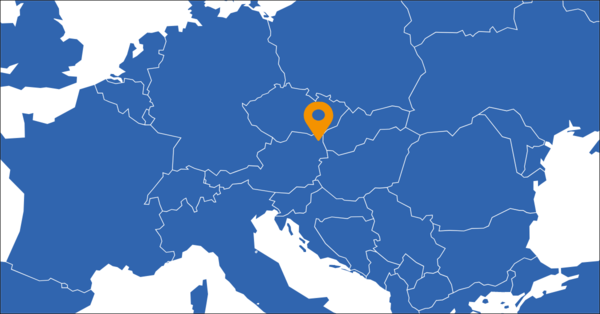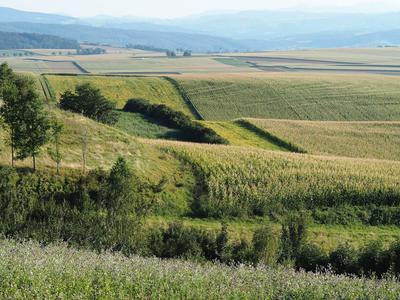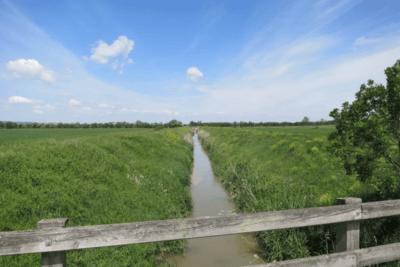Weinviertel.

The Weinviertel, situated in the northeastern region of Austria, is a district renowned for its vibrant agricultural activity. Its landscape is predominantly characterised by intensive farming, particularly notable for its unique wine-growing areas. The climatic conditions and fertile soils of the Weinviertel create an ideal environment for arable farming, including the cultivation of cereals, rapeseed, sunflowers, and sugar beets. Despite its strong agricultural presence, the Weinviertel boasts a diverse landscape structure. Ponds and wetlands within the region serve as biodiversity hotspots, enhancing the ecological richness of the area. This varied terrain contributes to the overall appeal of the district. In addition to its agricultural significance, its strategic proximity to Vienna has made it a popular place to live.
Challenges facing the region.
The tension between agriculture and water management in the Weinviertel, especially concerning smaller rivers and streams, arises from heavy regulation aimed at expanding agricultural land. In the context of climate change this tension introduces challenges like altered rainfall patterns, rising temperatures, longer droughts, and unpredictable heavy rainfall events. These changes can harm soil quality, reduce crop yields, and increase the risk of soil erosion and flooding. The deposition of fine sediment in water bodies further presents ecological challenges. Balancing agricultural development with environmental preservation is crucial for the Weinviertel to navigate these issues effectively.
Replicating Region's role in LAND4CLIMATE.
In the context of LAND4CLIMATE, replicating regions play a crucial role as observers and learners, focusing on knowledge and experience exchange with their relative frontrunning region. This approach aims to replicate the success of these measures in a practical experiment, assessing their adaptability in a different regional context. The emphasis is on knowledge transfer and skill development through collaborative efforts with the partner region. To facilitate this knowledge exchange, replicating regions participate in training programs related to the NBS efforts of LAND4CLIMATE. In essence, the replicating regions serve as active participants in the scaling-up process, contributing to the broader goal of extending the reach and effectiveness of NBS initiatives. By fostering collaboration and learning from frontrunning regions, they enhance their capacity to address climate challenges and contribute to a sustainable and resilient future.
Weinviertel’s connection to the Lafnitz catchment.
The climatic conditions in the Weinviertel closely resemble those of its frontrunning region, Lafnitz. Both areas are susceptible to the risk of heightened soil erosion and sedimentation in rivers and streams. Consequently, measures implemented to mitigate these challenges can be applied effectively in both regions. The successes achieved in addressing these issues in Lafnitz can serve as valuable experiences for exchange and adaptation in the Weinviertel, fostering collaborative efforts to enhance environmental resilience.



